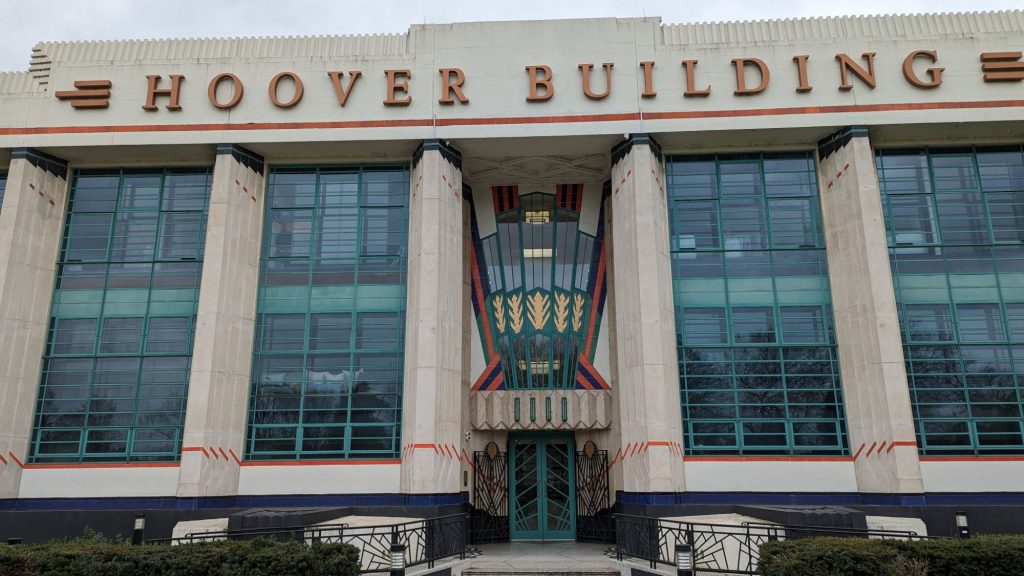
I published this piece in April, but for some reason to do with the fact that I published the posts from my phone rather than my computer, no email was sent to subscribers.
So, here is a chance to see it.
What makes owning a narrow boat so wonderful, apart from enjoying living amidst nature, is the accidental discovery of undreamt of wonders. Last week, I moved my narrow boat from Westbourne Park, on the Grand Union Canal, to Perivale. A 3-hour boat trip of less than 10 miles to a frankly uninspiring suburb. But, as so often, mooring in an uninspiring place uncovered surprises that transform the mundane to the delightful.
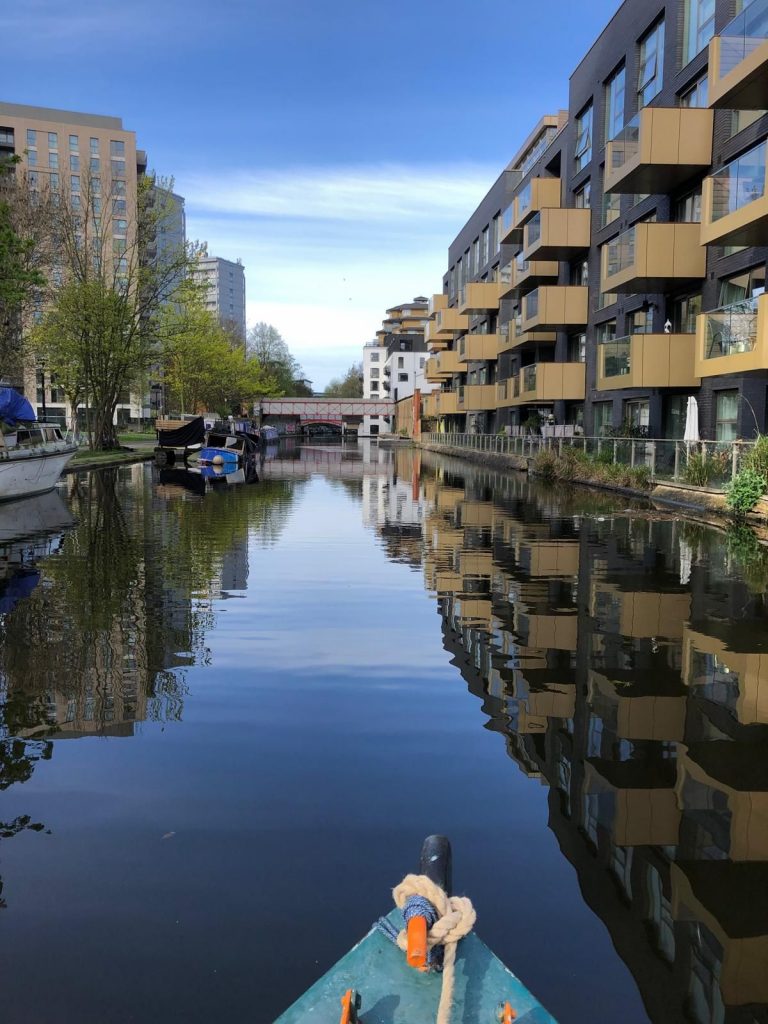
We set off on a beautifully sunny April morning to move the boat the requisite distance to satisfy licence terms. Rain at 12 prompted a premature end to the trip. We trudged to Perivale Underground Station, bemoaning our failure to get to Southall, to enjoy a Dosa In London’s Little India.
The road to Perivale is dull suburbia. But we stopped at a library boasting a cafe, which turned out to be a really nice bit of early 20th Century library architecture, with a cheerful volunteer explaining they were keeping the library from closure due to council cost-cutting.
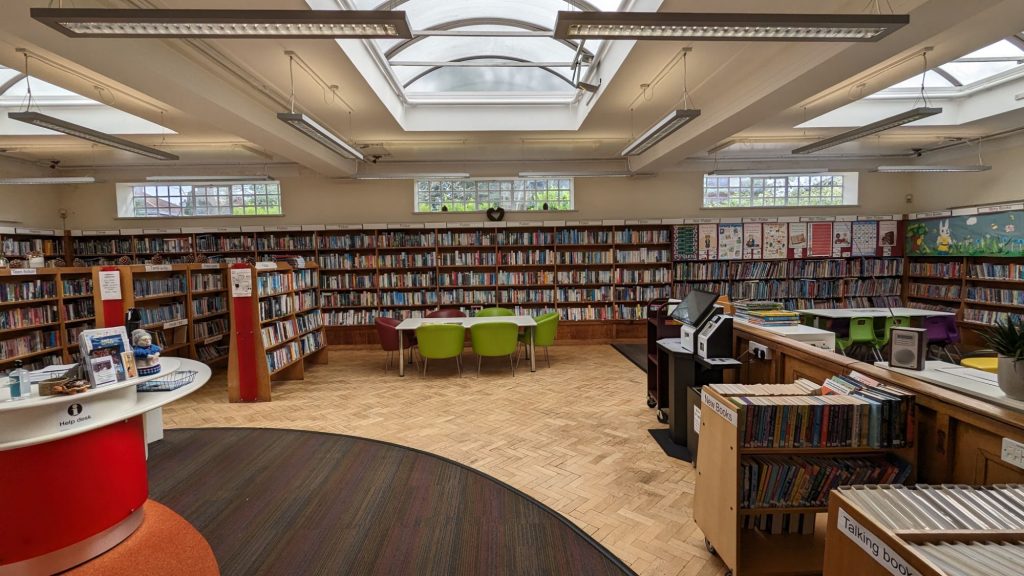
They had made the library really cosy with sofas and comfortably sitting areas. Sadly, the promised Café was not open.
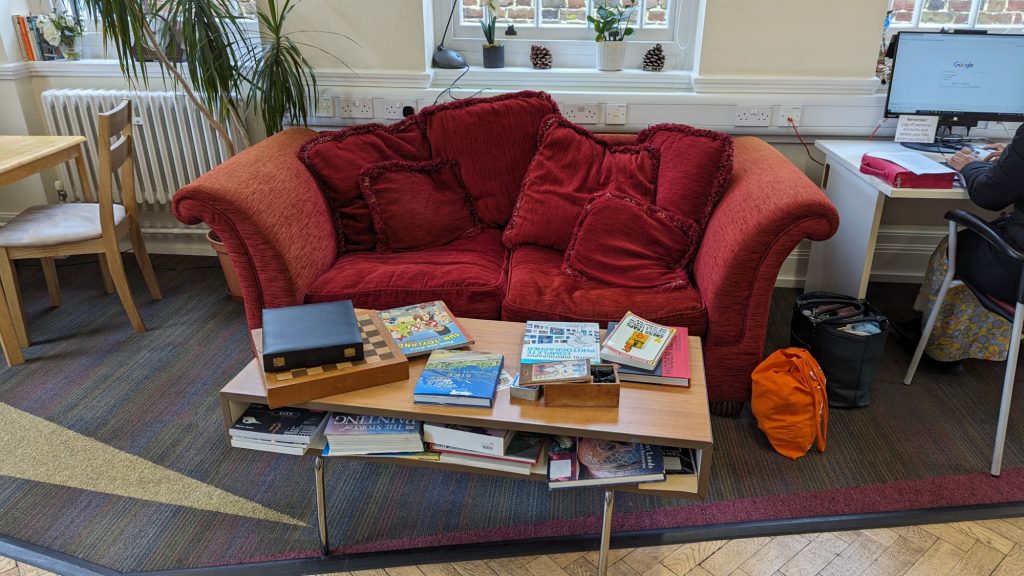
The volunteer pointed us in the direction of a sandwich at the Tesco in the Hoover Building. I had no idea this icon of Modernism was a short walk away, so we jumped at the chance to see, at close range, one of my favourite London buildings.
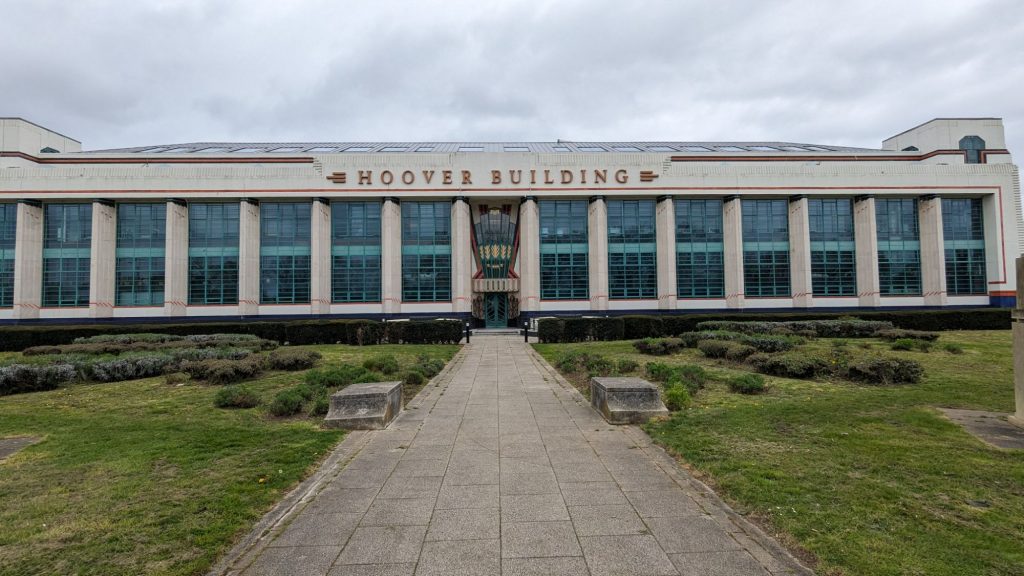
I regularly point it out to the groups I take to Oxford. But I have never seen it up close nor standing still. Not only is the building a fabulous cream and green, but it has a backstory of interest to London’s history. As road transport began to remake the geography of London in the early 20th Century, factories in Hackney, Tower Hamlets, Southwark, Lambeth, and other Inner London Boroughs closed, and new factories were constructed on the roads out of London, mostly manufacturing consumer goods. Park Royal, Greenford, Slough and Staines were among the areas to develop as consumerism powered the 20th Century with the production of irons, kettles, hairdryers, radios, washing machines, vacuum cleaners and suchlike delights for the workers and families. The fields around were turned into rows of semi-detached houses to mortgage to the workers.
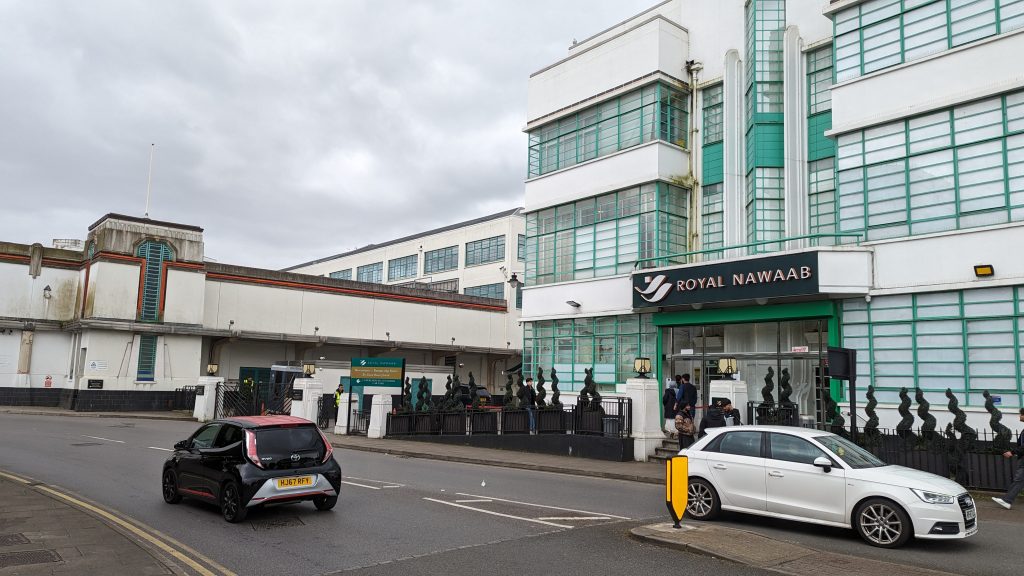
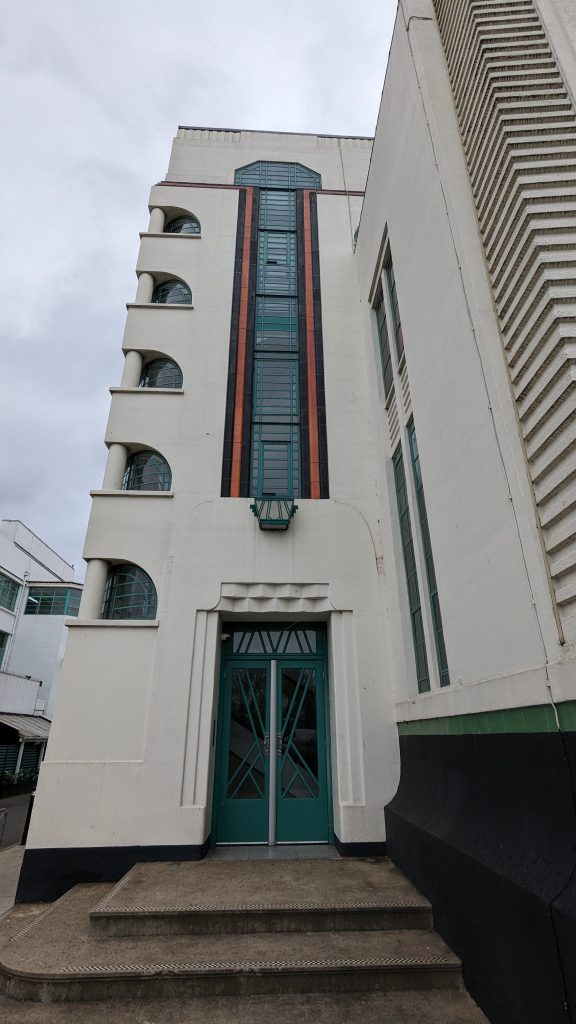
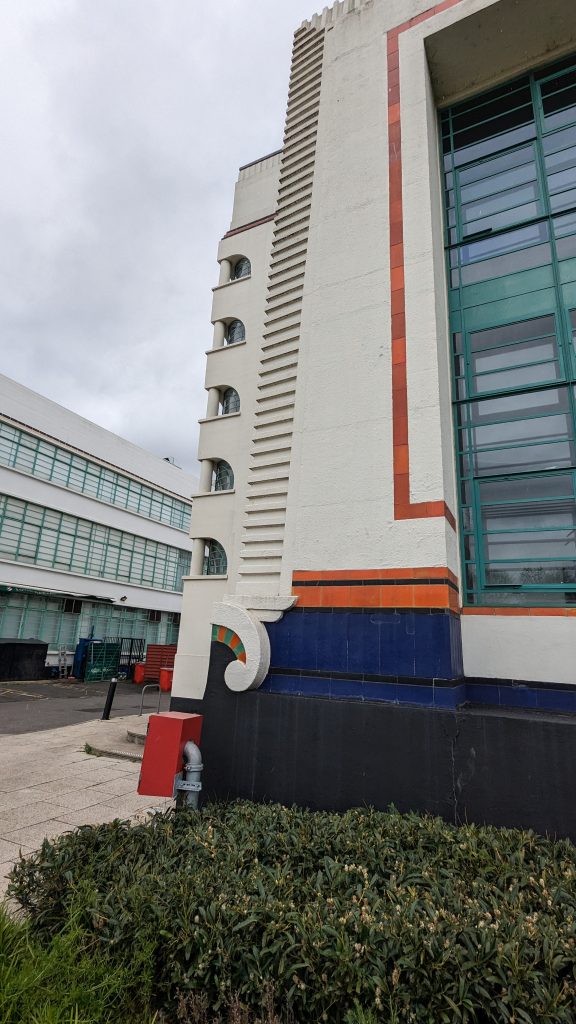
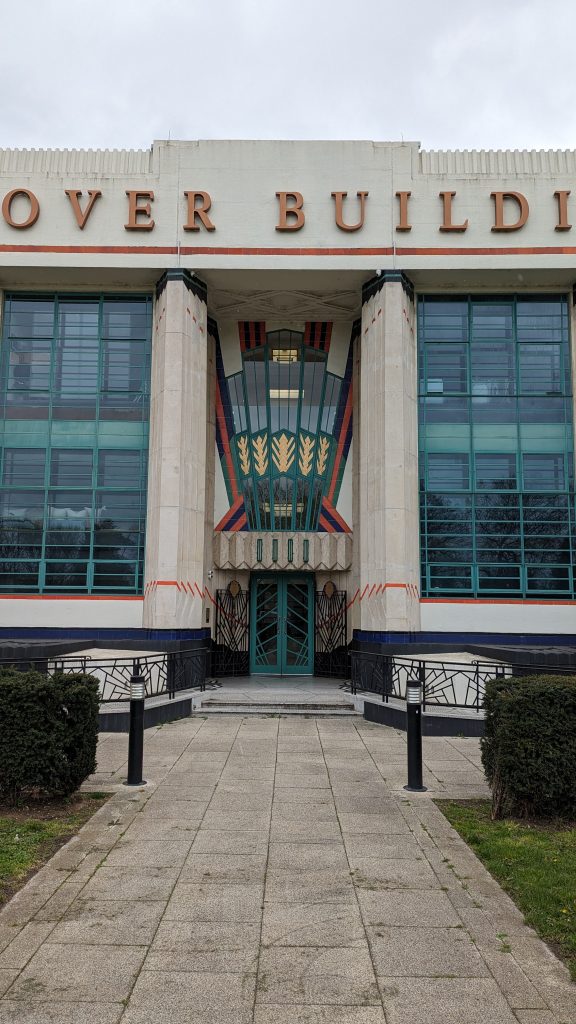
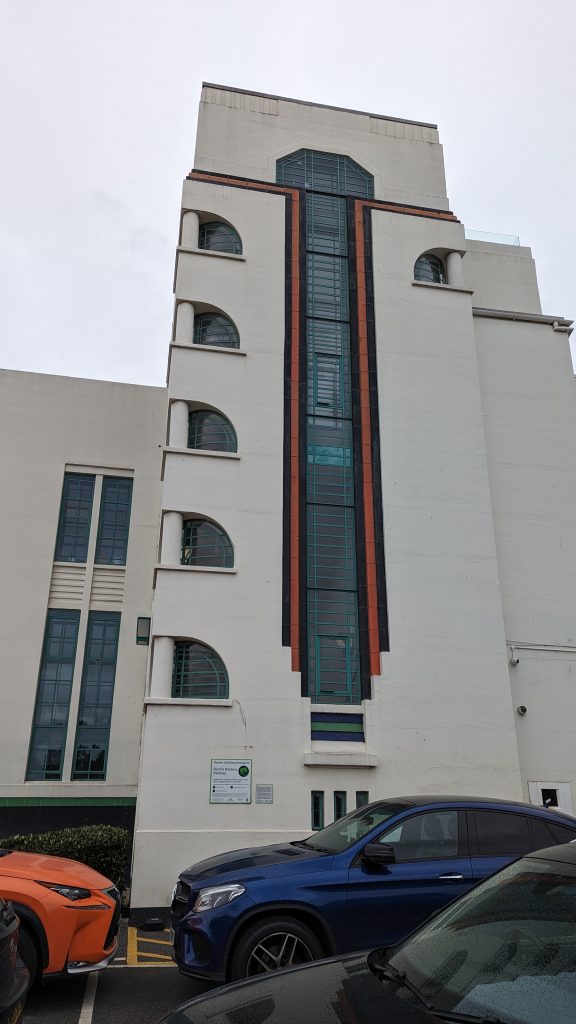
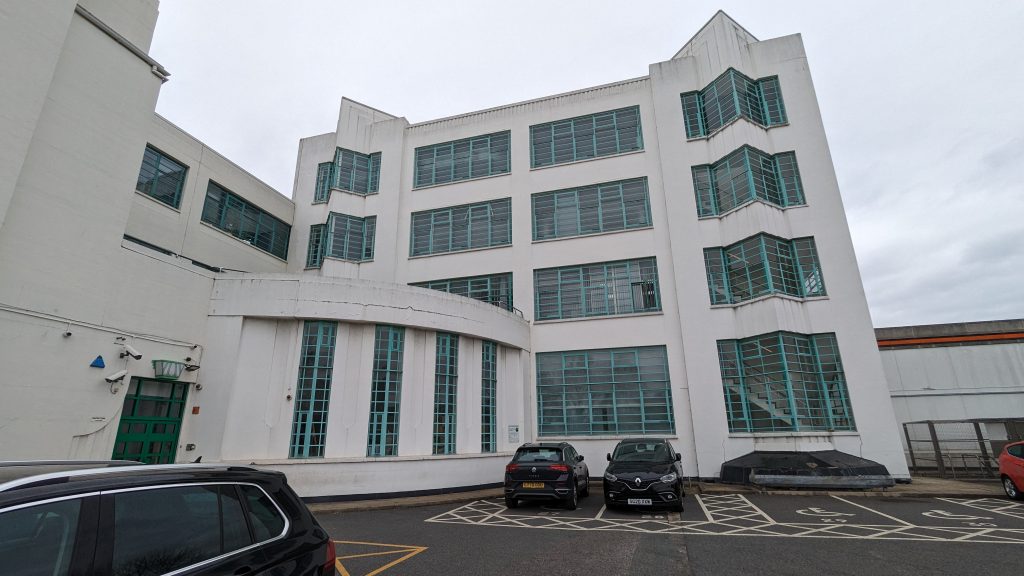
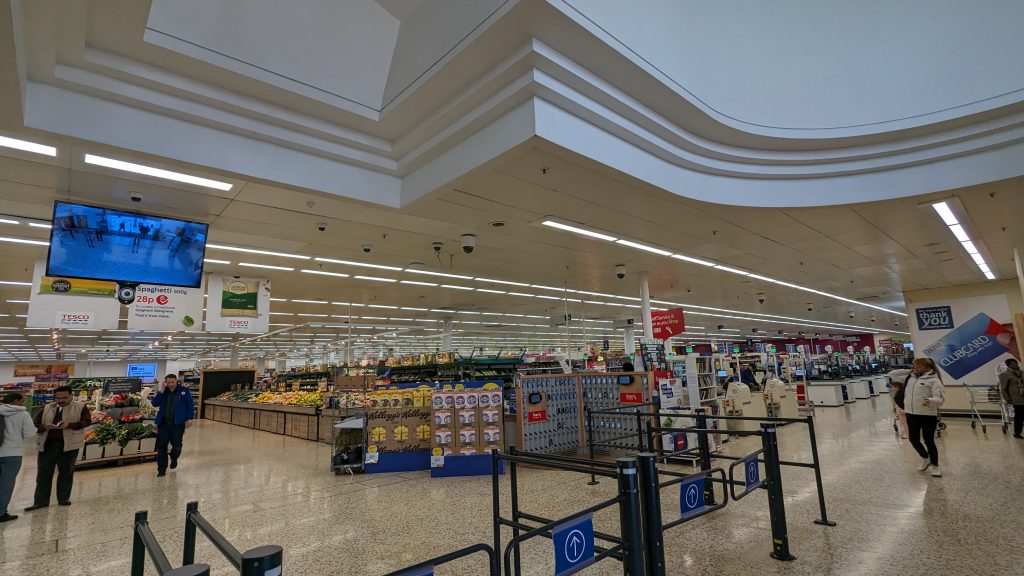
‘The Hoover Building is a Grade II* listed building of Art Deco architecture[1] designed by Wallis, Gilbert and Partners located in Perivale in the London Borough of Ealing. The site opened in 1933 as the UK headquarters, manufacturing plant and repairs centre for The Hoover Company.[2]‘ (Wikipedia). It has been converted to apartments and a Tesco occupies the Factory Floor.
What made this trip even more special was that one of the original buildings has become a Hotel, in which we discovered a massive Indian Restaurant. There, we found it full of about 500 people eating a fast-breaking Eid dinner. £26 to eat as much as you can, all self-service, with scores of chefs serving their delicious tureens of Asian food. Such a great cultural experience, and rather better than the tasteless Tesco sandwich we were expecting.
If I’m passing the factory on a tour, I tend to read to my group Sir John Betjeman’s patronising poem ‘Slough’ which is about the horror of the new consumer society. ‘Slough’ is wonderful to read and, yet, also, awful, not just the Oxbridge author looking down his long privileged nose at the lower classes but going to the extreme of suggesting Slough would be better off bombed to smithereens.
Guernica was bombed on 26th April 1937 and ‘Slough appeared’ in a Betjeman collection called ‘Continual Dew’ in the same year (I havent located a reference with the actual date of publication). Bad taste in the extreme, hardly mitigated by the fact that it was originally written in 1928 and was about trading estates in general rather than Slough in particular. Still, despite all it is still one of my favourite poems for the insight it gives to attitudes of the British class system.
So, here it is.
Slough
Come friendly bombs and fall on Slough!
It isn’t fit for humans now,
There isn’t grass to graze a cow.
Swarm over, Death!
Come, bombs and blow to smithereens
Those air-conditioned, bright canteens,
Tinned fruit, tinned meat, tinned milk, tinned beans,
Tinned minds, tinned breath.
Mess up the mess they call a town-
A house for ninety-seven down
And once a week a half a crown
For twenty years.
And get that man with double chin
Who’ll always cheat and always win,
Who washes his repulsive skin
In women’s tears:
And smash his desk of polished oak
And smash his hands so used to stroke
And stop his boring dirty joke
And make him yell.
But spare the bald young clerks who add
The profits of the stinking cad;
It’s not their fault that they are mad,
They’ve tasted Hell.
It’s not their fault they do not know
The birdsong from the radio,
It’s not their fault they often go
To Maidenhead
And talk of sport and makes of cars
In various bogus-Tudor bars
And daren’t look up and see the stars
But belch instead.
In labour-saving homes, with care
Their wives frizz out peroxide hair
And dry it in synthetic air
And paint their nails.
Come, friendly bombs and fall on Slough
To get it ready for the plough.
The cabbages are coming now;
The earth exhales.
850 new factories were built in Slough before the outbreak of world war two, and the Trading Estate was first seen here. And yes, they are bleak, and Slough is even now, not the most exciting or architecturally sophisticated of towns. But to imagine bombing a town in a time when there was a real fear of mass destruction from the air?
I particularly object to the line about tinned food because I was brought up on tinned beans, peas, steak and kidney pudding, pineapple chunks, peaches, and rhubarb. And exactly what is wrong with a hair-dryer?
Before I read Slough, I recount an experience I had years ago with an American group who suddenly started laughing for no reason. I enquired, and they pointed to a huge advertising hoarding with a poster about the Electrolux Vacuum Cleaner. Its location near the Hoover building, I imagine might have been deliberate, but what made the Americans laugh was the slogan:
‘Nothing sucks like an Electrolux’
To a British person, the slogan works in a positive sense and we appreciate the wit. For the Americans, it made them all laugh with shock as to why anyone would pay to say their vacuum cleaner was complete pants.
Oh, and second best? Well, the best Modernist Building in London is the Daily Express Building, Fleet Street.
Discover more from And Did Those Feet
Subscribe to get the latest posts sent to your email.

Great post!
You should organise a boat tour!
Subscribers now get all email and jetpak notifications, but it’s still impossible to write a comment.
‘Comments’ appear, but when you click, it reads:’ Oops, that page cant be found’
I had to go to your site, and then, to click on the title with the day’s post to comment…
Yes, I’m sorry about that. I think the problem is that when the author reposts or revises a previous post, and chances the title, the link at the top of the page doesn’t work, so it makes it difficult to get to the comments etc.
Not sure how to deal with that!